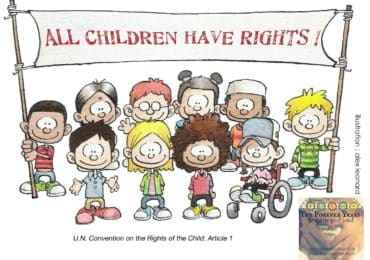This forms the concluding part of our 5 part series on “Child Friendly City”. Having discussed about the concept, need, importance, mechanism we will discuss about the existing and proposed policies to bring this into action. Along with the international initiatives we have elaborated on the policies and framework being followed in India to make this a reality.
United Nations Convention on the Rights of the Child (UNCRC)
The first UN document specially focused on child rights was- “Declaration on the Rights of the Child”. It was a moral guide of conduct for governments. In 1989, the global community adopted the United Nations Convention on the Rights of the Child. It consists of 54 articles covering all four major child rights: Right to life, Right to development, Right to protection, and Right to participation. It came into force on the 2nd September 1990.

Child Friendly Cities Initiative
UNICEF aims “to establish child rights as enduring ethical principles and international standards of behavior towards children”. CFCI is a means by which National Committees can promote and implement child rights reaching even at the local level. The Child Friendly Cities Initiative emerged in recognition of several important trends- “The rapid transformation and urbanization of global societies; the growing responsibilities of municipalities and communities for their populations in the context of decentralization; and consequently, the increasing importance of cities and towns within national political and economic systems.”
Sustainable Development Goals
In September of 2015, world leaders set a transformational path for the future of human development. They adopted the Sustainable Development Goals (SDGs). Millions of people are involved in shaping this global agenda like government, civil society, the private sector, concerned individuals (including children and youth). These stakeholders and others are now actively involved in executing this agenda from the even at local level and also at global levels so that all people (including all children) will live in a safer, cleaner and more prosperous world.

Scenario in India – Policies and Framework
Constitution of India
The constitution of India embraces a majority of the rights included in the UNCRC under the Fundamental Rights. It guarantees that a child has the following set of rights. These include:
- Right to free and compulsory elementary education for all children in 6–14 year age group (Article 21 A)
- Right to be protected from any hazardous employment till the age of 14 years (Article 24)
- Right to be protected from being abused and forced by economic necessity to enter occupations unsuited to their age or strength (Article 39(e))
- Right to equal opportunities and facilities to develop in a healthy manner and in conditions of freedom and dignity, and guaranteed protection of childhood and youth against exploitation and against moral and material abandonment (Article 39 (f))
- Right to early childhood care and education to all children until they complete the age of six years (Article 45)
Legislation and Rules
The key legislations and legal provisions that focus on children’s rights include 48 special and local laws and above 60 provisions dealing with various crimes, punishments and procedures as contained in the “Indian Penal Code, the Criminal Procedure Code and the Indian Evidence Act.” There is also much state specific legislation as well as judicial precedence set through case law.
Policy Framework
- National Policy for Children, 1974- This is the first policy document identifying and promoting the needs and rights of children in India.
- National Plan of Action for Children (NPA) was released in August 1992 following which India agreed to the UN Convention on the Rights of the Child.
- National Charter for Children, 2003– It reiterates the commitment to the cause of children with the aim of overseeing that no child remains hungry, illiterate or sick.
- National Policy on Education, 1986– It provides elementary education to colleges in both rural and urban India.
Towards Child Friendly Cities – Conclusion
Though there is enough of legislative and policy framework for securing child rights and fostering development of children, there hasn’t been significant improvement in the living condition of children in urban areas. This is mainly due to the fact that the existing policies and legislative framework primarily focus on child rights and social aspects of children’s development like health and education but have not given much significance to the living conditions and urban environments in which the children live. Moreover, it happens many-a-times that even though policies and provisions address the issues of children, they fail to involve children in formulating them, owing to the paternalistic approach (as discussed earlier).

Apart from saying participation for the name sake, participation that is needed is “Authentic” According to Hart; there are five forms providing authentic participation. The first involves children voluntarily taking the tasks assigned by adults. Here adults (guardians and policy makers) explain how to accomplish the errands and why children should take part. Considering the second type of participation, here children are formally consulted. But they are not involved in the final decision making process or in implementation of any proposed change. But most importantly, children are pre-informed regarding the intentions to use their inputs. The third form of participation corresponds to missions that are initiated by adults (mainly policy makers) but then completed through joint decision with children. It makes sure that perspectives of children are taken into consideration. The fourth form of participation involves processes that are begun and led by children. Here, adults play a secondary support. This enables children to shape their own environment. Lastly, the fifth form is somewhat opposite to the third form. It refers to projects that are begun by young people but then ultimately developed through joint decision making with policy makers. A Hart mentions, “Along with the third model, this type of participation can be characterized as proactive and visionary as it allows for children and adults to interact and benefit from their respective strengths to build more user-friendly communities.” These five forms involve the free, informed, and meaningful participation of children. These forms correspond to different contexts and various situations. These are quite simplistic in nature, but in reality the planning process are highly complex. Many-a-times, a single planning process might include the characteristics of various participatory means. (Torres, 2009)
If only adults were as optimistic as children: “The children’s view of the city is optimistic and full of life, open to the future while firmly rooted in the present. A sense of the future that boldly demands to be listened to and dialogued with. A tenacious feeling of optimism that claims the right to be part of the dialogue in giving shape and identity to the city.” (Davoli and Fari 2000: 18)

Children are the citizens of tomorrow. They are the future of our nation. And like if the vision of an efficient city can be a necessary condition for making smart cities, then it is imperative to state that child-friendly planning and governance should also be a condition for making smart cities.
List of References
The following articles were referred to while writing the series of Child Friendly Cities:
- Anne, R. Pebley and Mary, E. (2002). In our Backyard: How 3 Neighborhoods affect kids’ lives? Rand Corporation.
- Barry, Percy and Thomas, N. (2010). A Handbook of Children and Young People’s Participation. Routledge Publication.
- Bartlett S. (October 2002). Building Better Cities with Children and Youth. Environment & Urbanization.
- Cabannes, Y. (October 2002). Children and young people build participatory democracy in Latin American cities. Environment & Urbanization.
- Chatterjee, Sudeshna. (2015). Making Children matter in Slum Transformations: Lessons from India’s National Urban Renewal Mission. Journal of Urban Design.
- Chatterjee, Sudeshna. Children’s friendship with place: An exploration of environmental Child friendliness of children’s environments in cities.
- Corsi M. (October 2002). The Child Friendly Cities initiative in Italy. Environment & Urbanization.
- Ergler. Smith and Kotsanas. (2015). What makes a good city in preschoolers’ eyes? Findings from participatory planning projects in Australia and New Zealand. Journal of Urban Design.
- Hart, R. (1997), Children’s participation: the theory and practice of involving young citizens in community development and environmental care. London
- Malone, Karen. (2004). Holding Environments: Creating spaces to support Children’s Environmental learning in the 21st century. University of Wollongong.
- Malone, Karen. (May 2006). United Nations: A key player in a Global Movement for Child Friendly Cities. Child friendly review.
- Mcallister. (2008). Child Friendly Cities and Land Use Planning: Implications for Children’s Health. Environment Journal Volume.
- Mojca, Golobič. (June 1999). Children in the City. Urbanistični Inštitut Republike Slovenije.
- Nordström, Maria. (March 2010). Children’s views on Child-Friendly Environments in different Geographical, Cultural and Social neighbourhoods.
- Racelis M. Desiree and Aguirre. (October 2002). Child rights for urban poor children in child friendly Philippine cities: views from the community. Environment & Urbanization.
- Riggio E. (October 2002). Child Friendly Cities: Good governance in the best interests of the Child. Environment & Urbanization.
- Satterthwaite, David. City Governance for and with Children. International Institute for Environment and Development: London
- Simoneti. (June 2000). Children and adolescents in the physical space: from a playground for children to a child friendly city or from measures to networks. Urbanistični Inštitut Republike Slovenije.
- Singh, Amit Kumar. (2013). Mounting Discrimination Declining Hope.
- Swart, J. (October 2002). “We know something someone doesn’t know”: Children speak out on local conditions in Johannesburg. Environment & Urbanization.
- Torres, Juan. Children and Cities: Planning to grow together. Université De Montréal. Ontario.
- Tranter. Cook. Whitzman. (2015). Is ‘Citizen Kid’ an independent kid? The relationship between Children’s Independent Mobility and Active Citizenship. Journal of Urban Design.
- Tranter. Wyver and Naughton. (2010). Ten ways to restrict children’s Freedom to Play: The problem of surplus safety, contemporary issues in early childhood.
- UNICEF. (2012). The State of World’s children, Children in an Urban World.
- Visscher, Sven de and Bouverne-de, Maria. (September 2008). Recognizing Urban Public Space as a co-educator: Children’s socialization in Ghent. International Journal of Urban and Regional Research.
- Whitzman, C. Worthington, M and Mizrachi D. (September 2009). Can Child Friendly Cities promote children’s independent mobility?
- Whitzman. Freeman. (2015). Young Voices, Vital Perspectives: Designing with Children in Asia-Pacific cities. Journal of Urban Design.